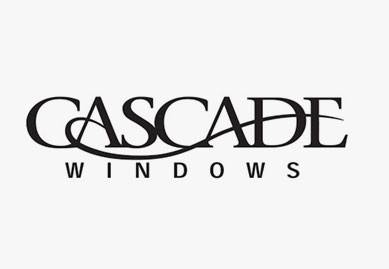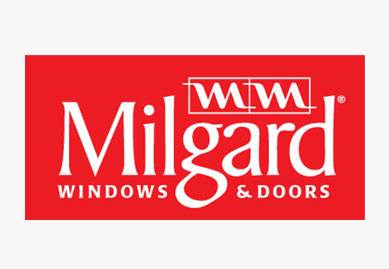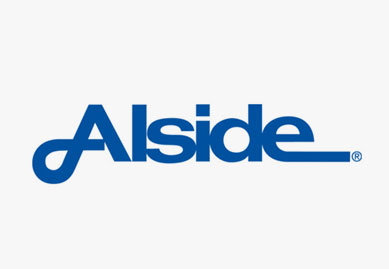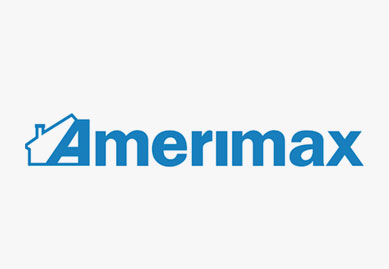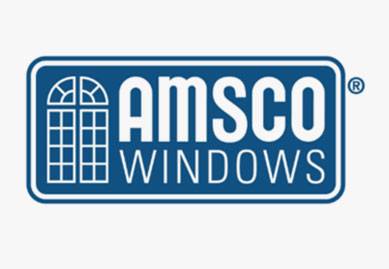A Guide to Hardie Board’s Durability: Factors that Influence How Long it Will Last

Over 10 MILLION homes in the United States have James Hardie Siding a.k.a Hardie board. That is by no accident. Hardie is consistently outperforming most if not all competitor siding products. We give them credit where credit is due because the product is extremely beautiful and is backed up by an industry-leading warranty. However, it begs the question: How long is Hardie Board’s Durability? How long will my Hardie board last?
What is Hardie Board?
James Hardie, a fiber-cement siding, started to be popular in the 1980s as an option to replace asbestos siding. The siding itself is made from all natural materials.
The main ingredients being cement, silica, and cellulose. They take all of the ingredients and combine them with water into a raw mass. Then the mass is applied layer by layer to panels of different sizes. The panels are pressed, dried, dyed, and then cut to order.
Key Advantages of Hardie Board
James Hardie has a lot of benefits and very little downside. Besides the benefits I will be going over below, this siding is a great investment. We have never had a situation where one of the families we serve complained or regretted their decision.
In the end, it was always worth it and still is. It not only raises the value of your home, but also the look of Hardie is unmatched. It is in my opinion, a top 3 siding in terms of look out of all of the available materials in all of home exteriors.
Resistance to External Elements
James Hardie Fiber-Cement Siding is built to withstand a lifetime of troubles. It is fire-resistant, water-resistant, pest/insect-resistant, and of course harmful UV ray-resistant. It is built to last and withstand many hot summers and many cold, rainy winters.
Aesthetic Versatility
Hardie siding has the most versatile design library from any siding manufacturer. They have everything you need to build your dream home. From using world-renown designers to partnering with famous builders like Chip and Joanna Gaines from hit-show Fixer-Upper, Hardie will have everything you ever wanted.
From choosing the right color on your siding to picking the right trims patterns, James Hardie has the capability to virtually make any style of exterior that you like! This even applies to replicating material looks. If there’s a certain material pattern you like, they most likely have something that can replicate it.
Superior Warranty
It has the best warranty when it comes to fiber-cement siding. It has a no-questions-asked warranty for 30 years on ALL Hardie materials. In addition to this amazing warranty, they even guarantee the paint/color for 15 years! (Most paint jobs on typical siding last about 5-10 years)
Factors Influencing Hardie Board’s Durability
It’s important to remember that several factors can influence how well Hardie board stands the test of time. Let me walk you through these key factors.
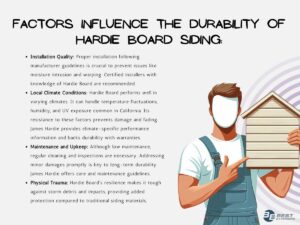
Installation Quality
Being in the industry for a little over a decade, I know how crucial it is to follow the manufacturer’s guidelines during installation. Improper installation can lead to issues down the line, like moisture intrusion or warping.
That’s why I always recommend using certified installers who know the ins and outs of Hardie Board. James Hardie, the manufacturer, offers detailed installation guides to ensure best practices are followed.
Local Climate Conditions
Living in California, we’re no strangers to temperature fluctuations, humidity, and UV exposure. Hardie Board handles these conditions well, but it’s good to understand their impacts.
For instance, temperature changes can cause materials to expand and contract, but Hardie Board is designed to withstand this. Additionally, its resistance to humidity and moisture makes it ideal for coastal areas. Plus, it holds up well against UV rays, preventing fading over time.
You can find more about its weather resistance at James Hardie’s Climate Specific Performance. It is important to note that even if you do have doubts about the durability, their warranty does back this up.
Maintenance and Upkeep
Even though Hardie Board is low maintenance, it still needs some care. Regular cleaning, which is quite simple, keeps it looking new. Periodic inspections are also a good idea to catch any issues early.
Dealing with minor damages promptly can save a lot of hassle in the future. For maintenance tips, check out James Hardie’s Care & Maintenance guidelines.
Physical Trauma
In our state, we’ve seen our fair share of storms and, unfortunately, accidents that can impact our homes. Hardie Board is known for its resilience to blunt force, be it from storm debris or other impacts.
It’s much tougher than traditional siding materials, offering an added layer of protection for your home. For more on its impact resistance, you might find this resource from James Hardie helpful.
Understanding these factors can help ensure that your Hardie Board siding remains in top condition, protecting your home for years to come.
[h4] Pro Tip / Key TakeawaysClean your gutters. I know this doesn’t sound like it pertains, but when your gutters are cluttered with leaves and sticks, water will overflow and the debris from the gutters can scratch and degrade your paint. |
Tips for Maximizing Hardie Board’s Lifespan
It’s vital to follow the manufacturer’s installation guidelines. This includes proper nailing techniques, ensuring correct spacing between boards, and using the right type of flashing and caulking. How your siding is installed will be a huge factor in the longevity of your siding.
Also, regular cleaning and inspecting your Hardie board siding can go a long way. Gently wash it with a garden hose and a soft brush to remove dirt and debris. Also, check for any cracks or chips, especially after severe weather events. In most cases, you can powerwash it too but be careful. You do not want to accidentally use too much PSI and ruin or damage your siding.
Lastly, while Hardie board is resilient, taking extra precautions like ensuring proper drainage around your home and trimming nearby trees can prevent potential damage from severe weather.
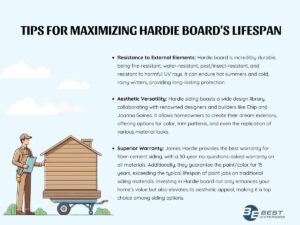
Recognizing When to Replace Hardie Board
Knowing when to replace your Hardie board siding is crucial for maintaining your home’s safety and appearance: Look for signs like fading color, chipping, cracking, or warping. While Hardie Board is designed to be durable, it’s not immune to the effects of time and elements.
Check for signs of moisture damage or rot, especially in areas where the siding may have been continuously exposed to water. This can compromise the structural integrity of the siding.
Sometimes, it might be more economical to fully replace your siding rather than repair certain sections. Consider factors like the age of the siding, the extent of the damage, and the cost of repairs compared to replacement; but remember if you already have existing Hardie siding, check your warranty to see if your siding is still covered.
Conclusion
To sum it up, Hardie board is one of the most durable and reliable siding products on the market. You can expect it on average to last at minimum the span of the warranty. With proper care and cleaning, it can last even longer.
We always recommend doing yearly inspections on your home that way if there is an issue developing, it can be taken care of before it spreads. Once your warranty does expire, we recommend still keeping basic maintenance up.
After the 15 covered years on the paint, we strongly suggest repainting your siding, and following that, paint your siding every 5-10 years. If you follow all of the steps above, your siding will not only last but look as beautiful as ever!
FAQs – A Guide to Hardie Board’s Durability
-
Does Hardie board deteriorate?The short answer is yes, but Hardie does not deteriorate the same as traditional siding would. It will outlast most other products and is warrantied for 30 years.
-
How long does Hardie board last? 50 years on average.
-
Does Hardie board increase the value of the home? Yes, it increases curb appeal and energy efficiency. You can expect at least an increase of 20% in your home value even compared to other brand new siding materials like vinyl or aluminum.



 all communications are private and not shared with other parties.
all communications are private and not shared with other parties.
